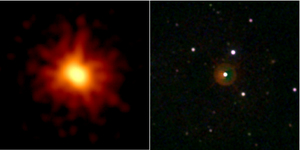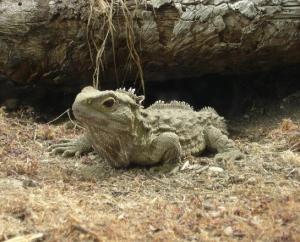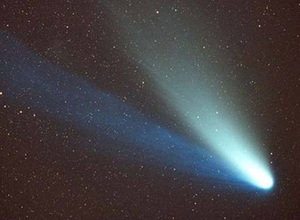WASHINGTON - A powerful stellar explosion detected March 19 by NASA's Swift satellite has shattered the record for the most distant object that could be seen with the naked eye.
The explosion was a gamma ray burst. Most gamma ray bursts occur when massive stars run out of nuclear fuel. Their cores collapse to form black holes or neutron stars, releasing an intense burst of high-energy gamma rays and ejecting particle jets that rip through space at nearly the speed of light like turbocharged cosmic blowtorches. When the jets plow into surrounding interstellar clouds, they heat the gas, often generating bright afterglows. Gamma ray bursts are the most luminous explosions in the universe since the big bang.

|
| ©NASA/Swift/Stefan Immler, et al.
|
| The extremely luminous afterglow of GRB 080319B was imaged by Swift's X-ray Telescope (left) and Optical/Ultraviolet Telescope (right). This was by far the brightest gamma-ray burst afterglow ever seen.
|
Comment: "Most gamma ray bursts occur when massive stars run out of nuclear fuel. Their cores collapse to form black holes or neutron stars."
This is according to standard astronomy. There is another school of thought, which is winning increasing popularity and which does explain many astronomical phenomena. It is the proponents of the "Electric Universe".
See:
Big Bang Cosmology: Going Down a Black Hole?



Comment: "Most gamma ray bursts occur when massive stars run out of nuclear fuel. Their cores collapse to form black holes or neutron stars."
This is according to standard astronomy. There is another school of thought, which is winning increasing popularity and which does explain many astronomical phenomena. It is the proponents of the "Electric Universe".
See: Big Bang Cosmology: Going Down a Black Hole?